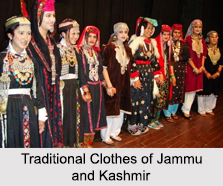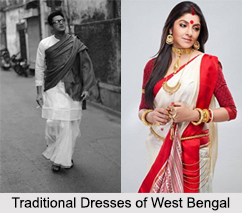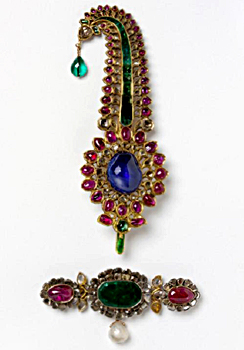 Jewellery for men in Rajasthan is exquisitely beautiful and attractive in appearance. Although male jewellery has witnessed a declined graph, over time, traditional gold and silver ornaments are still worn by rural men in the state. Turbans have acquired different heights of popularity under the Mughal dynasty. It was also during this time that extraordinary turban ornaments became popular. These were the sarpech, kalgi, sarpatti and turra.
Jewellery for men in Rajasthan is exquisitely beautiful and attractive in appearance. Although male jewellery has witnessed a declined graph, over time, traditional gold and silver ornaments are still worn by rural men in the state. Turbans have acquired different heights of popularity under the Mughal dynasty. It was also during this time that extraordinary turban ornaments became popular. These were the sarpech, kalgi, sarpatti and turra.
The kalgi is a type of Rajasthani jewellery for men that were a feather plume inspired by the feathered crests of the wonderful birds, native to their region. The most distinguished Mughal kalgi-design possessed three black heron feathers and only members of royal family could wear this kalgi. Sometimes, metal-sheets were replaced for feathers. The sheets were beaten into fine strips and, then, carefully designed in the shape of feathers. The sarpatti is another turban ornament that primarily came into vogue around the late eighteenth century. It is essentially a synthesis of the sarpech and armband and consisted of hinged units, their numbers ranging from three to seven, with a kalgi attached to the central unit. Sometimes, a single gemstone pendant used to hand from the sarpatti. In another design, the entire ornament had several gems fixed like a fringe at the lower edge of each unit.
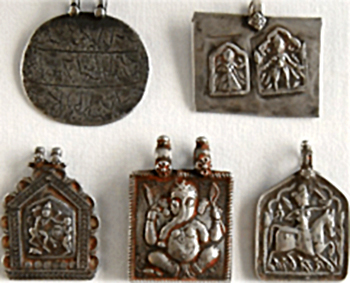 The sarpech is a compound of two words, namely sar literally meaning `head` and pech, referring to a screw. As an ornament, although it was flat, it was shaped like a single vertical feather, with a curved tip. Crafted from metal, it was set with gems on the obverse side. Sometimes, even the reverse was elaborately enamelled or decorated with precious stones. It was worn by tucking its gold stem, usually called the quill, into the folds of the turban. The turra often shaped like a fan, is an ornament and used on the turban. Baleora is a gold necklace, commonly worn by influential Hindus; it consisted of seven chains that were further adorned with seven clasp units, which were set with gemstones. A screw was built into the back clasp to fasten the entire piece. The necklace had an elaborate central pendant called a dhuk-huki or jugni, ornamented with gemstones. Another common neck-ornament is the gop and jugavali. It is a circular torque with a stunning pendant known as the jugavali.
The sarpech is a compound of two words, namely sar literally meaning `head` and pech, referring to a screw. As an ornament, although it was flat, it was shaped like a single vertical feather, with a curved tip. Crafted from metal, it was set with gems on the obverse side. Sometimes, even the reverse was elaborately enamelled or decorated with precious stones. It was worn by tucking its gold stem, usually called the quill, into the folds of the turban. The turra often shaped like a fan, is an ornament and used on the turban. Baleora is a gold necklace, commonly worn by influential Hindus; it consisted of seven chains that were further adorned with seven clasp units, which were set with gemstones. A screw was built into the back clasp to fasten the entire piece. The necklace had an elaborate central pendant called a dhuk-huki or jugni, ornamented with gemstones. Another common neck-ornament is the gop and jugavali. It is a circular torque with a stunning pendant known as the jugavali.
Hansli is an ornament that is worn by men, women and children. It derives its name from the collarbone on which it rests. The basic form of the hansli is a rigid circular silver torque with a hollow or solid construction. The men`s hansli is distinguished from those worn by women and children by the presence of bells or ghughra. Rigid gold torques, with gemstones and enamel work were also worn in some communities. Motimala or Manakmala is an elaborate necklace made of pearls, emeralds or rubies. It usually has five or seven strings of varying or similar length. The ears of Rajasthani men are pierced at a very early age. Ear-piercing is considered to be auspicious and an elaborate ceremony generally marks the occasion. Balas is gold wire hoops, usually strung with precious stones, like pearls or rubies. Jhela and Murki are small ear-rings that are worn on the earlobes and are often shaped like six-petalled flowers.
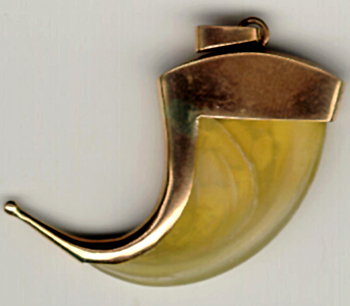 Khag or Kandhe-Ka-Gahna was made of gold, its facade side set with gemstones and enamelled on the reverse. Although its earliest records in India date back to the twelfth century, this ornament has seen several innovations introduced to its design. It was worn either on one or both shoulders. The bajuband or the armlet was usually made of floral motifs and these designs were marked with precious stones. Beenti are rings worn on the fingers. Kada or the bracelets are made of either gold or silver. It is a common piece of jewellery and worn by almost all Rajasthani men. Belt Buckles are lavishly ornamented in Rajasthan, especially in case of men. These ornaments are made of both gold and silver and the inner plate may often be enamelled.
Khag or Kandhe-Ka-Gahna was made of gold, its facade side set with gemstones and enamelled on the reverse. Although its earliest records in India date back to the twelfth century, this ornament has seen several innovations introduced to its design. It was worn either on one or both shoulders. The bajuband or the armlet was usually made of floral motifs and these designs were marked with precious stones. Beenti are rings worn on the fingers. Kada or the bracelets are made of either gold or silver. It is a common piece of jewellery and worn by almost all Rajasthani men. Belt Buckles are lavishly ornamented in Rajasthan, especially in case of men. These ornaments are made of both gold and silver and the inner plate may often be enamelled.
The gajjalu are cast brass ankle bells that are sewn on to a strip of leather and worn by male-dancers when they perform. This is a theatrical costume-jewellery worn only by performers for any special occasion. The tazim is crafted in gold or silver. It is a hereditary chain anklet that was a sign of special recognition and honour granted by a ruler. It was worn on the right ankle; however, when granted in pairs, they were worn on both ankles. The receivers of this ornament were called tazimi sardar and were entitled to several privileges. In contemporary days, villagers wear tazimi on their right ankle during their marriage. Amulets are protective pieces of jewellery for the Rajasthani men and believed to bestow good luck to the wearer and are found in most of the traditional societies in the subcontinent. In Rajasthan, the choice of amulets is more often dependent on the wearer`s community or clan and its patron-deity, rather than on individual choice. Amulets may be worn either as necklaces or bracelets. Amulets come in a wide variety of shapes.
The sher-nakh-jantr is a silver amulet that is curved like a tiger`s claw. Metal plaque amulets usually have a relief-worked image of a Hindu deity, accompanied by his vahana or vehicle. Amulets may also depict folklore heroes. Amulets often feature geometrical shapes. Squares, rectangles and pentagons are representative of a house, six-sided amulets are known as patri and are representative of a temple, and circular amulets called mandala are believed to ward off evil spirits. Jewellery for Rajasthani men made from coins, which are no longer in circulation, also falls under the classification of talismanic jewellery, although they might, at first sight, appear to have complete ornamental value. Coins could be easily conceived of as amulets, partly because metals are considered holy by the local people and because of the stamped images on them.
Ornaments in the lives of Rajasthani people are, thus, interwoven into the fabric of everyday life in Rajasthan. Crafted from a wide variety of raw materials, they serve too many purposes and their designs range from the simple to the highly elaborate ones. They emphasize the striking appearance of the Rajasthani people, giving Rajasthan its awesome splendor and commemoration.
